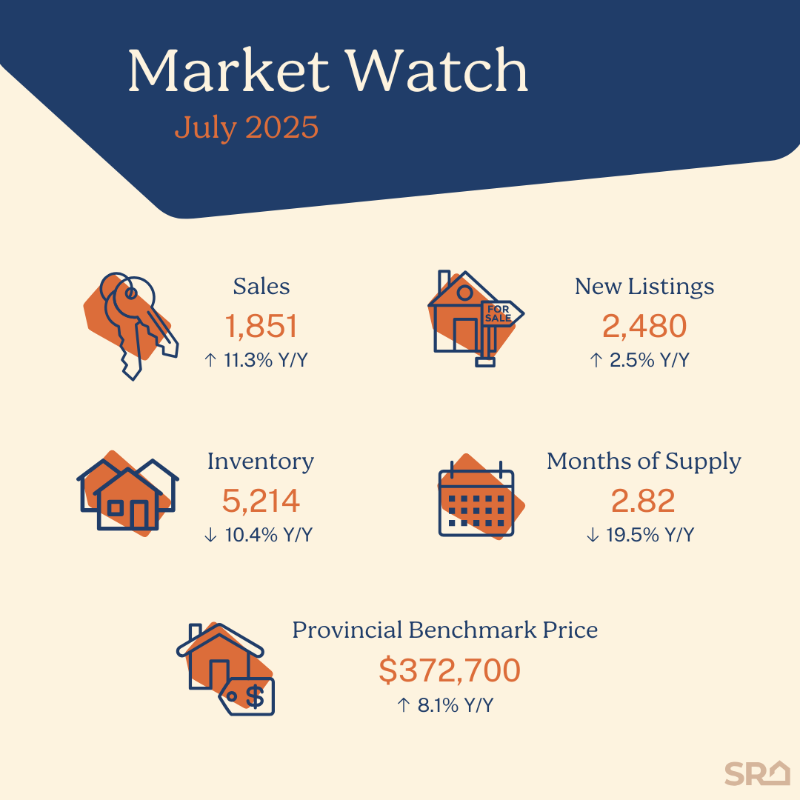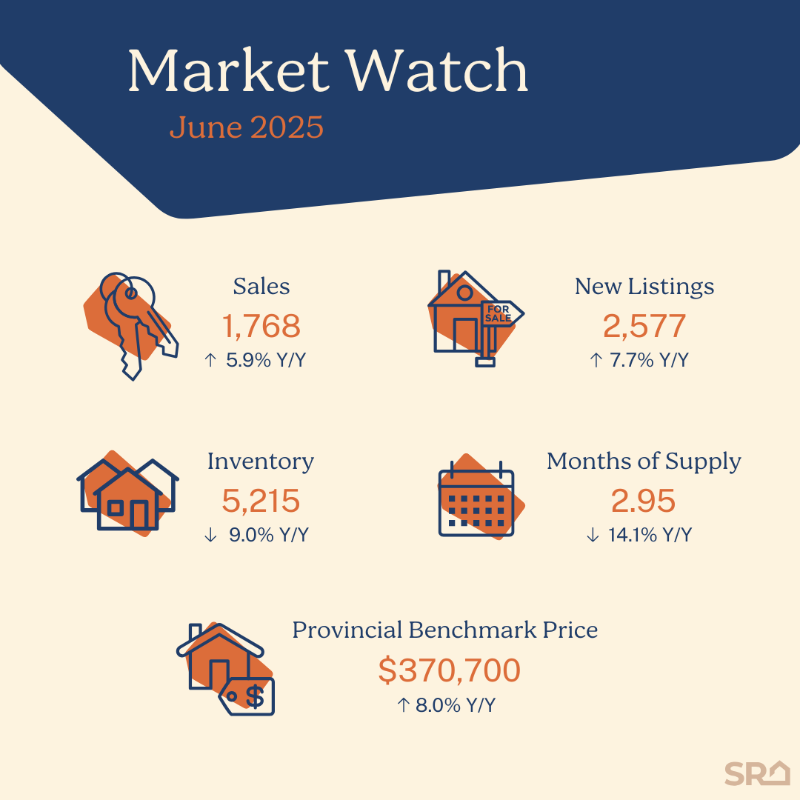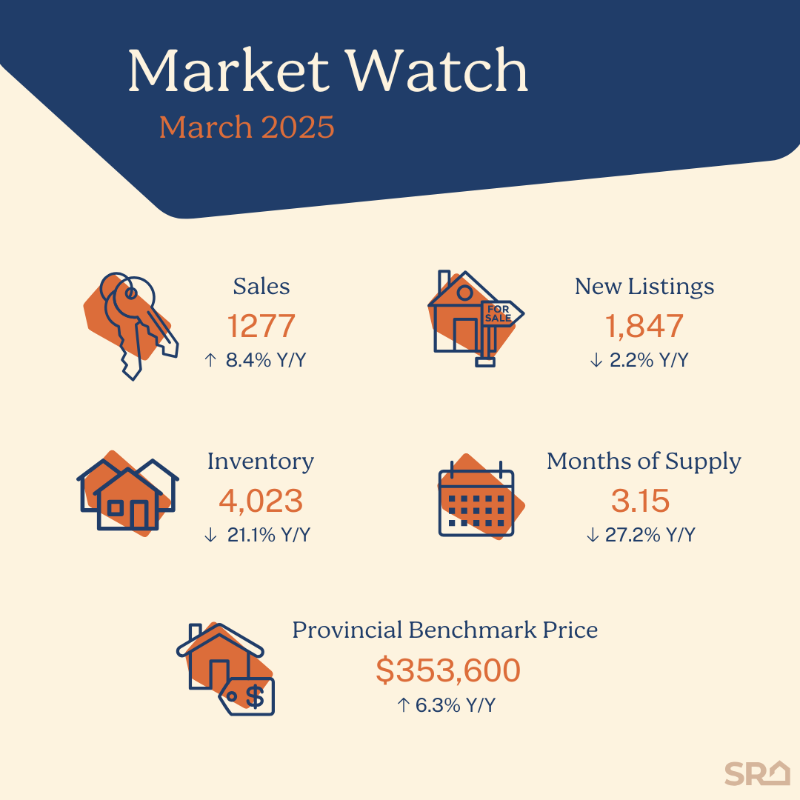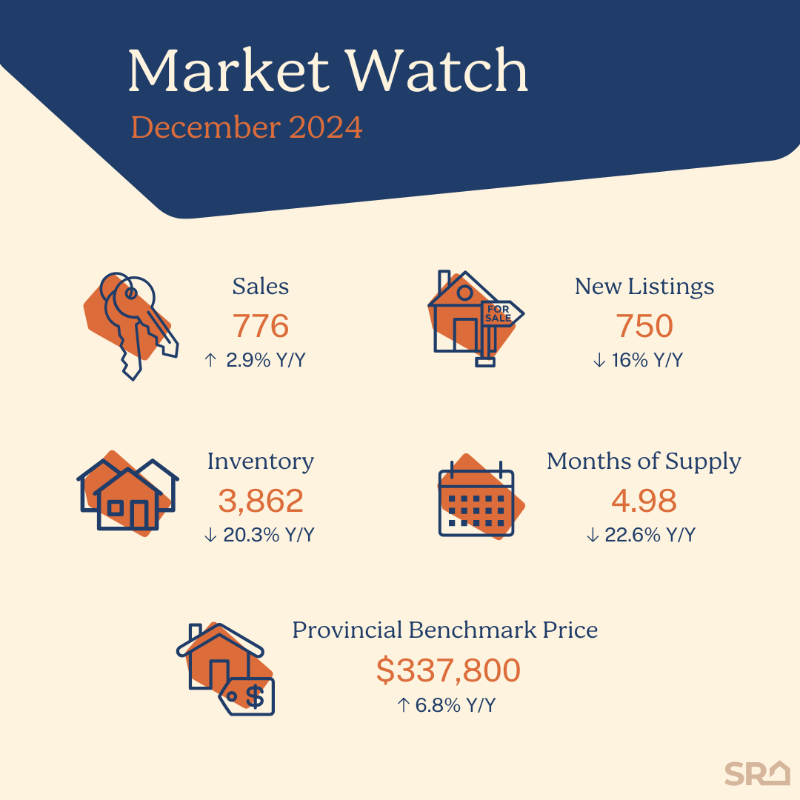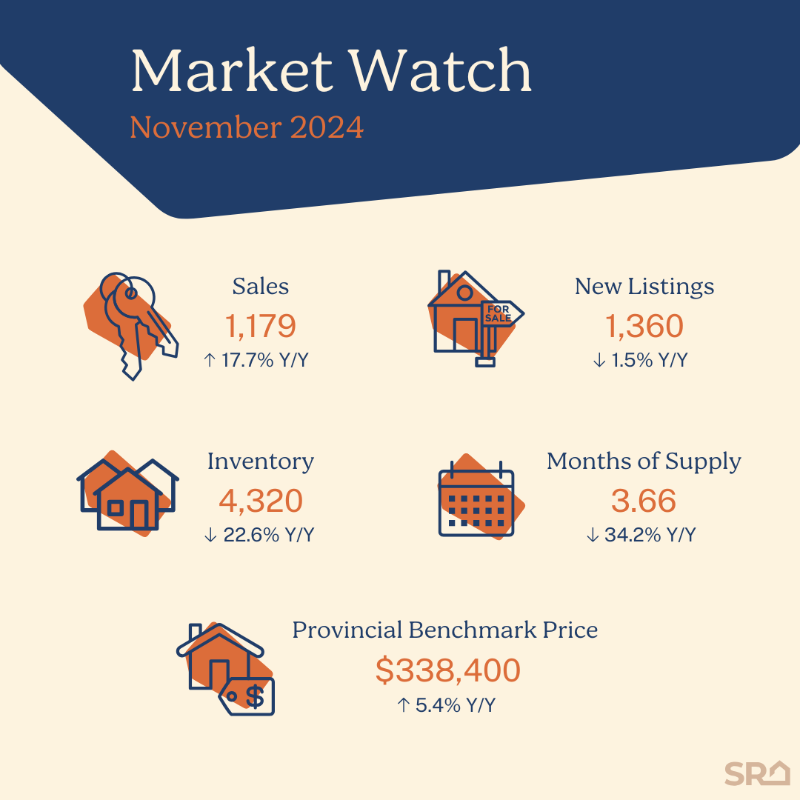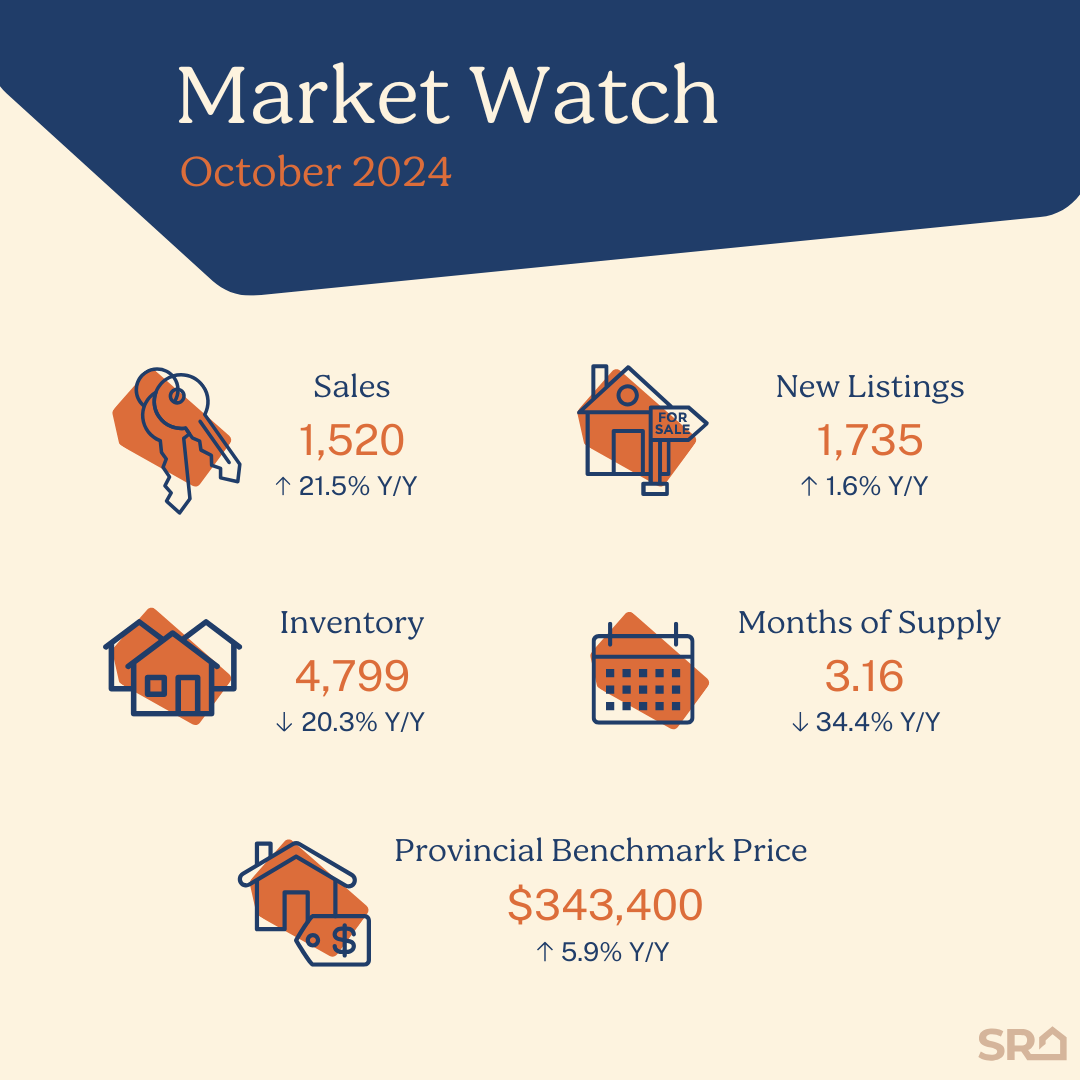Saskatchewan’s housing market posted another strong month in November, marking the province’s 29th consecutive month of above-average sales and keeping year-to-date activity on track to surpass 2024 levels with 15,430 sales to date. Saskatchewan reported 1,073 sales in November, a decrease of 106 sales, or nine percent, compared to November 2024. However, despite the year-over-year decline, monthly sales were over 12 percent above long-term, 10-year averages, underscoring the continued momentum across Saskatchewan’s housing market.
“November’s statistics reinforce what we have been seeing all year.” said Association CEO, Chris Guérette. “Strong demand, resilient activity and a market that continues to outperform expectations. We are on pace to exceed last year’s near-record sales and we are doing that with significantly less inventory. That speaks to the strength of Saskatchewan’s industry and the confidence buyers have in this province.”
There were 1,376 new listings throughout the month, up slightly compared to November 2024 but still well below historical averages. Despite moderate new listing relief, inventory levels are currently 45 percent below the 10-year average. With 708 of the 4,165 active properties reported conditionally sold and expected to exit the market, there were 3,457 available units across the province at the end of November.
Saskatchewan reported a residential benchmark price of $360,500 in November, down from $362,700 in October. While the modest monthly decline aligns with typical seasonal trends, the residential benchmark price increased by over seven percent compared to November 2024.
“Buyers continue to show confidence in our market despite tight conditions, and strong permit and start figures are encouraging,” said Guérette. “but we can’t overlook the impact of short-term policy proposals that restrict supply. Band-aid measures, like rent control, don’t create more homes, they simply make it harder for people to find them. Saskatchewan’s momentum depends on a coordinated, supply-focused approach from decision makers heading into 2026.”
###
Regional Highlights
All provincial economic regions reported year-over-year sales declines in November, with sales declines ranging from four percent in the Saskatoon-Biggar region, to 40 percent in the Yorkton-Melville region. However, all regions except for Yorkton-Melville and Prince Albert reported sales levels above the 10-year average, while most remain on track to surpass 2024 sales levels.
While the Saskatoon-Biggar region continues to report the tightest market conditions across the province, inventory levels are down considerably across the regions – ranging from 33 to 71 percent below the 10-year historical average.
Price Trends
Home prices continued to rise across every region of the province in November, as all Saskatchewan communities reported year-over-year benchmark price gains for the seventh consecutive month.
The City of Melville again reported the strongest monthly benchmark price growth, as prices were up 20 percent year-over-year. Other notable gains included Estevan (16 percent), Swift Current (15 percent), Yorkton (15 percent), Humboldt (13 percent), Weyburn (13 percent), and Meadow Lake (11 percent).
City of Regina
Regina reported 268 sales last month, down one percent year-over-year and over 22 percent above long-term, 10-year averages.
There were 291 new listings in November, down three percent year-over-year and nine percent below the 10-year average. When paired with another month of strong sales, inventory levels remain nearly 45 percent below historical averages. With 150 of the 547 units available already reported conditionally sold, there are 497 available properties heading into December.
Regina reported a residential benchmark price of $329,300 in November, down from $334,100 in October. However, the modest price decrease aligns with seasonal trends and November prices were six percent higher than November 2024.
City of Saskatoon
Saskatoon reported 372 sales in November, down two percent year-over-year. Despite the slight decrease compared to November 2024, sales were 25 percent above the 10-year average for the month.
The province’s largest centre saw another month of rising new listings, but strong sales prevented any meaningful inventory relief, as supply levels continue to sit over 40 percent below historical averages.
Of the 808 active units at month’s end, 217 were conditionally sold and expected to exit the market, resulting in 591 available properties heading into December.
Saskatoon reported a residential benchmark price of $421,000 in November, up from $420,300 in October and over six percent higher than November 2024.







